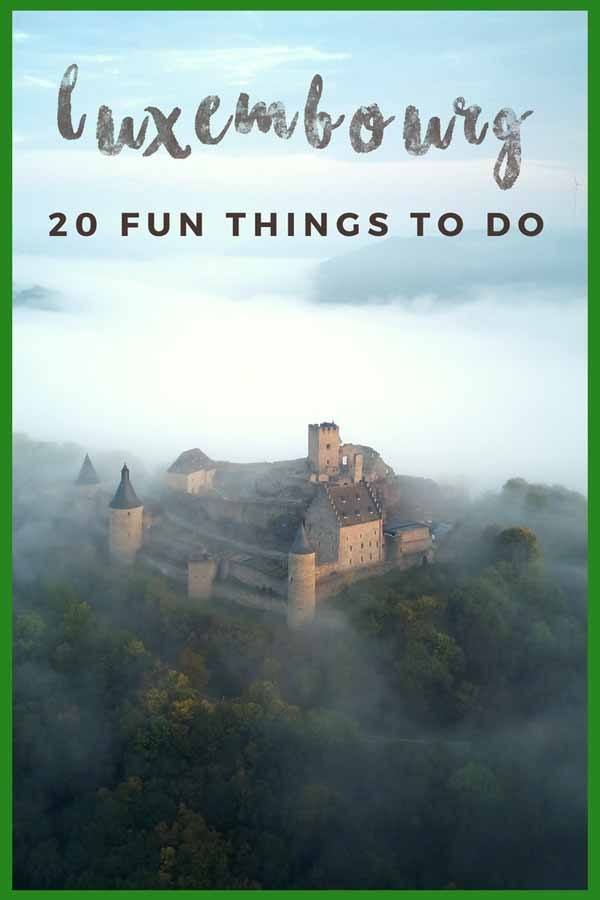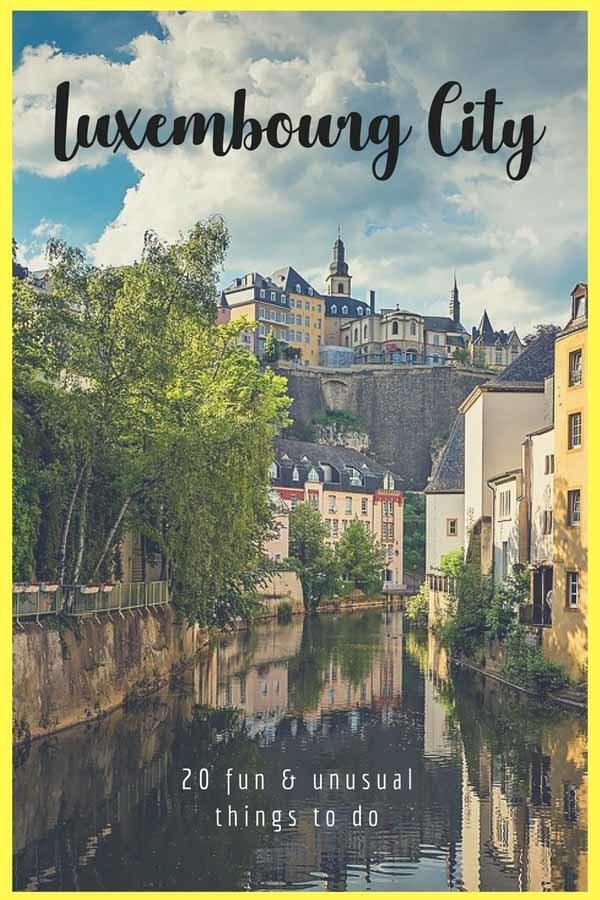Think Luxembourg is a boring place? Think again! There are so many fun things to do in Luxembourg, you won’t get bored in this tiny but super interesting country!
Have you ever planned to visit Luxembourg? I wouldn’t be surprised if your answer is no. Luxembourg is the kind of place people tend to overlook, when planning a journey across Europe or a city break – places like London or Berlin, or nearby countries like Belgium, France or the Netherlands are a much more common choice.
I was surprised to find out that despite its small size, Luxembourg does indeed have a lot to offer.
I visited the country for the first time in July 2015 and spent two days touring the best castles in Luxembourg (did you know that there are more than 130 castles in the country?), then visited again in July 2018 to discover the Mullerthal region – yet, even after two visits, there is still so much more to see in Luxembourg!
Luxembourg City is a great place to start – the capital is very scenic and full of quirky sights and great viewpoints.
Yet, we would recommend anyone heading to Luxembourg to spend at least one day touring the countryside – maybe discovering the industrial past in the southern region, enjoying nature in Mullerthal, or wine-tasting in the Moselle.
We’ve collected our 20 favourite things to do in Luxembourg, including Luxembourg City and beyond – let us know if you have any more to add!
Click below to jump to the relevant section!
Interesting Things to Know Before Heading to Luxembourg
Things to do in Luxembourg City
Where to stay in Luxembourg City
Mining History in Southern Luxembourg
Relaxing and Wine in the Moselle
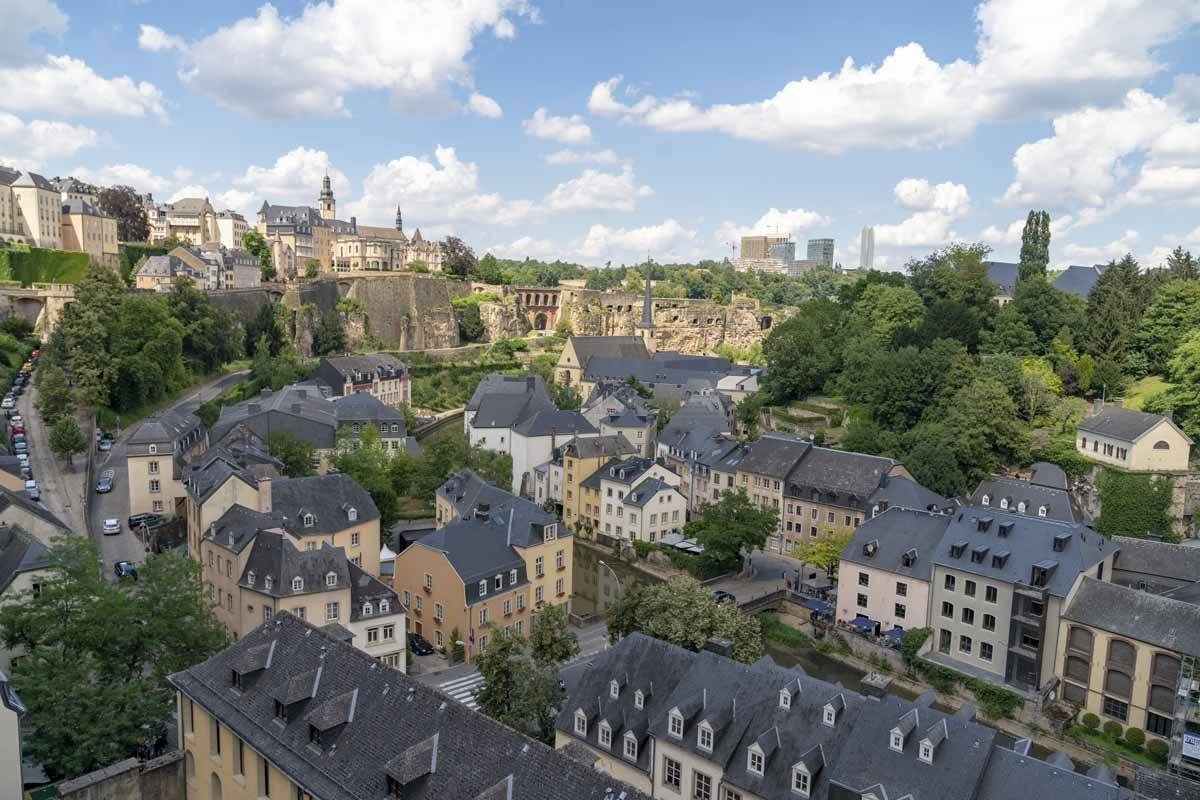
Interesting Things to Know Before Heading to Luxembourg
Where is Luxembourg and How Big is it?
Luxembourg is located in the heart of Western Europe, bordering France, Belgium and Germany, and it’s very easy to access from the whole of Europe by train, plane, bus or car.
Luxembourg ranks #7 in the list of Europe’s smallest countries, just behind Malta and Andorra. Its total surface is 2,586 square km, and it measures 82 km long and 57 km wide. Not quite as tiny as Jersey, but still small!
Is Luxembourg Expensive?
No more than other places in Western Europe. You can get hostels or campsites for as cheap as €20 per night, and a budget hotel in Luxembourg City will cost about €70 for a double bedroom.
Food is a great deal – portions are large, quality is great and prices are reasonable, and you’ll be able to have great meals for less than €20 per person. Sightseeing and getting around is also reasonable, especially if you get the Luxembourg Card!
How Do You Get to Luxembourg?
It’s super easy! The international airport is only a short bus ride from the centre of Luxembourg City. National airline Luxair flies to all major European cities, and recently low-cost airlines have started to fly to Luxembourg as well.
If you prefer travelling by train, you can get to Luxembourg from Paris in just over 2 hours by TGV, and in 3 hours from Brussels. The German town of Trier is very close to the Luxembourgish border, and from there you can reach the capital in less than an hour by train.
Flixbus and Flibco connect Luxembourg with lots more locations around Europe.
What’s the Best Way to Get Around Luxembourg?
The public transport system in Luxembourg includes buses and trains reaching every corner of the country – renting a car is not really necessary. We recommend getting the Luxembourg Card, available for one, two or three days and including free public transport around the whole country, as well as free access or discounts to Luxembourg sights and points of interest.
If you are planning to head to several destinations away from Luxembourg City and you only have limited time, a tour may be a better option than public transport, as some bus lines servicing small villages only run hourly. Check out some of the best Luxembourg tours below!
How’s the Weather in Luxembourg?
Weather in Luxembourg is pretty much the same as elsewhere in Central Europe – warm in summer (22°C on average in July and August, although it may be hotter!), cold in winter (2°C average between Dec and Feb), mild in autumn and spring. The rainiest months throughout the year are June and December.
How is Luxembourg in Winter?
Winter in Luxembourg is a surprisingly great time to visit, with fun winter events – more on this later! It doesn’t get terribly cold – daytime temperatures between December and February are around 3-5°C, dipping just below zero at night.
You may be wondering if it’s likely to snow in Luxembourg in winter. It does happen, but it’s not a yearly occurrence – so if it’s a snowy holiday you’re after, perhaps look elsewhere. Otherwise, winter is an excellent time to travel to Luxembourg!
What Languages are Spoken in Luxembourg?
One thing is certain – you won’t have trouble to communicate in Luxembourg! The country has THREE official languages – Luxembourgish, German and French, English is widely spoken, 20% of the population speaks fluent Portuguese and since it’s a popular expat location, you’ll probably meet somebody who speaks your language!
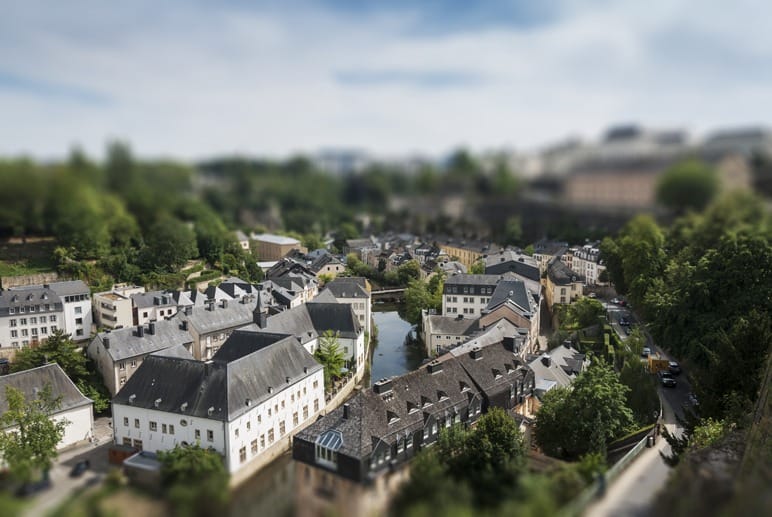
Things to do in Luxembourg City
Let’s start our account of what to do in Luxembourg with the capital, known as Luxembourg City (sometimes just ‘Luxembourg’ for short). If you only have a day or a weekend in Luxembourg, we recommend sticking to the capital since it’s incredibly pretty and there’s lots to see!
1) Walk Around the Old City
The best place to start your exploration of Luxembourg City attractions is the Unesco-listed Old City, the historic centre of town, set in a scenic location on top of a cliff overlooking the confluence of the Alzette and Petrusse rivers.
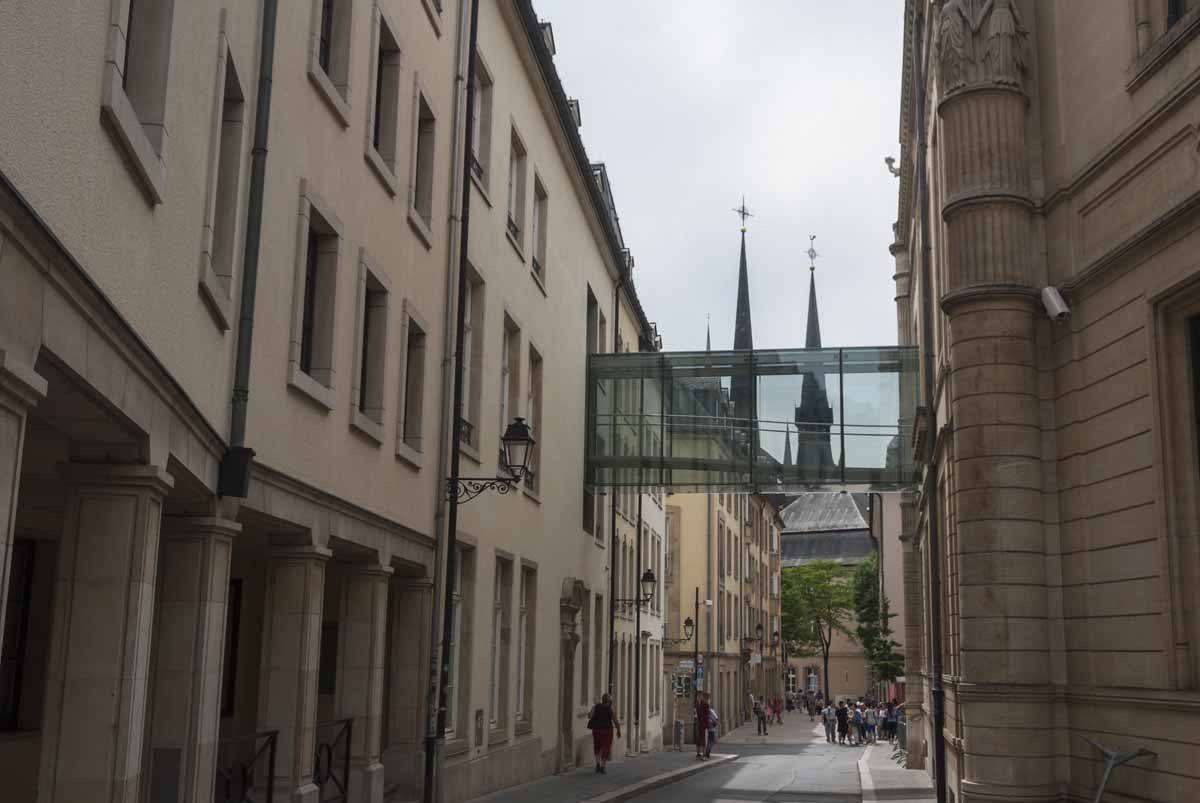
The Old City isn’t big, but it includes enough Luxembourg points of interest to keep you busy for half a day or longer – start with Place Guillaume, the main square where you can see the equestrian monument dedicated to William II of Orange-Nassau, who turned Luxembourg into a constitutional monarchy, and the Hôtel de Ville or City Hall, located right across the square.
Less than a minute walk away you’ll find the Grand Duke’s Palace and the Parliament of Luxembourg located right next door and connected to another building by a modern glass passage. Another cool location to check out in the Old City is the Place d’
2) Grand Ducal Palace
When I first visited Luxembourg, an American journalist who was part of the same group said, looking at the Grand Ducal Palace (Palais Grand-Ducal), ‘I can’t believe this is the office of the Grand Duke!’
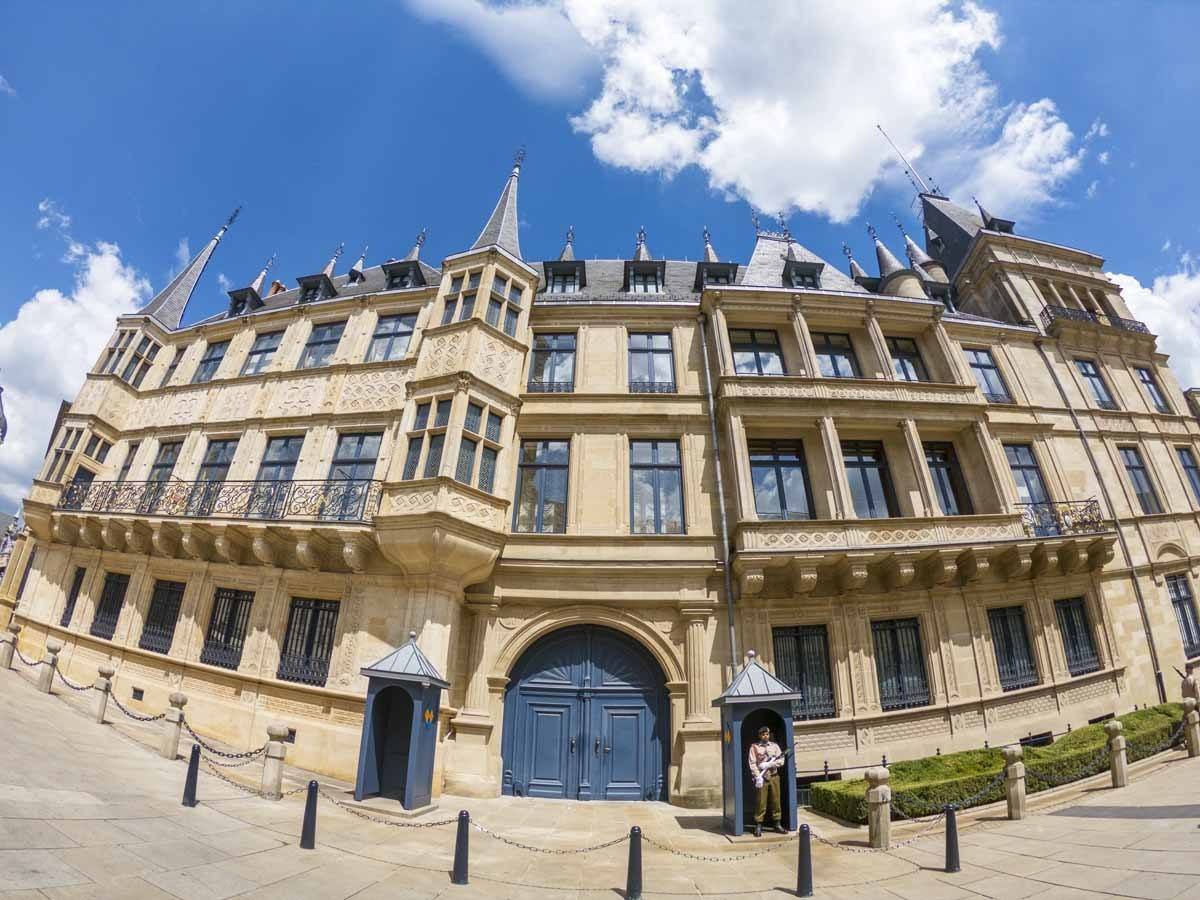
His reason was that it didn’t look particularly ‘grand’, and there was no security save for two guards posted outside. I guess this is a great image of Luxembourg as a whole – a place where you may run into the Prime Minister walking across the street.
In any case, the Grand Ducal Palace is indeed the office of the Grand Duke of Luxembourg. It is possible to visit the Palace with a guided tour when the Grand Duke is in his summer residence, between mid-July and the beginning of September.
Don’t miss it – it should definitely belong to your list of places to see in Luxembourg City!
3) Bock Casemates
This is my favourite thing to do in Luxembourg City, so don’t miss it! Once upon a time Luxembourg was known as the ‘Gibraltar of the North’ for its complex fortification system, but most of the city walls were destroyed during the 19th century.
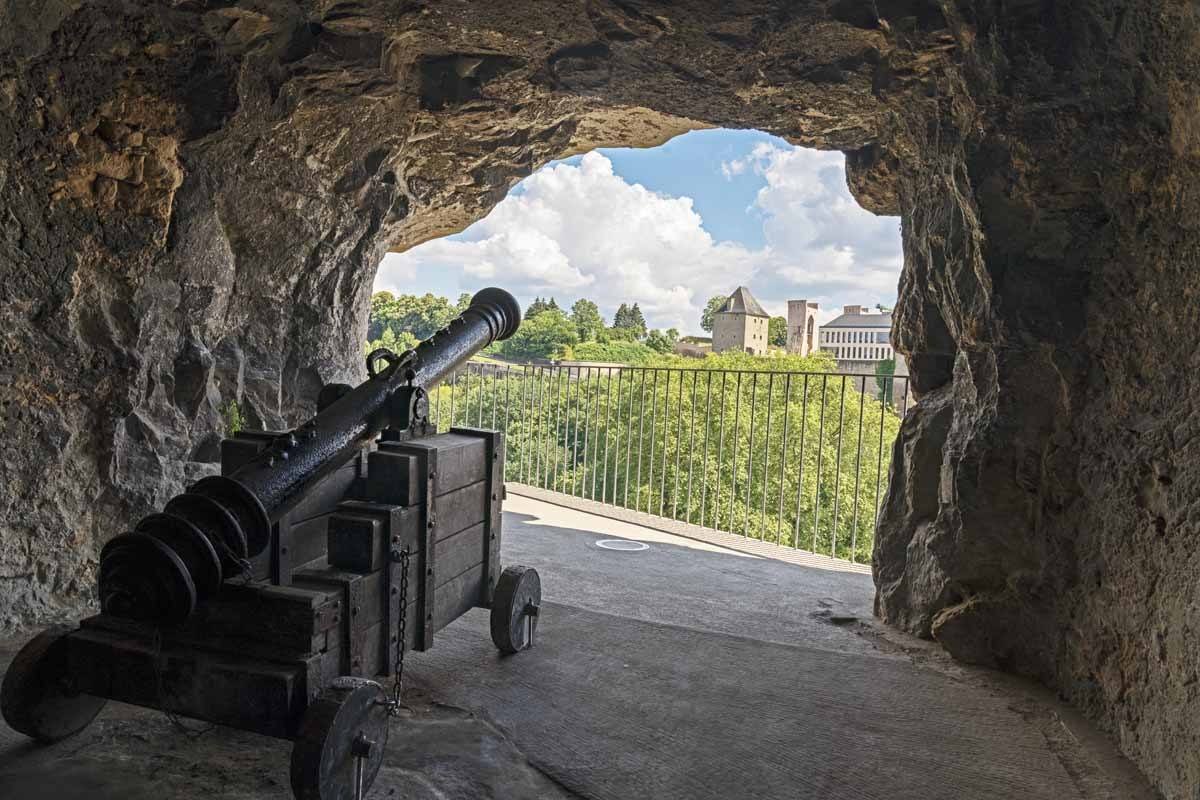
The basement of the fortress, which extended into the cliff atop which the city was built, housed the casemates, a set of cannon emplacements used to protect the city. Built by the Spanish and French in the 17th century, the casemates were connected to a complex set of tunnels that also included shelters, kitchens, storehouses, workshops and even stables.
The casemates helped the citizens of Luxembourg City survive attacks in two occasions – first, during the siege by the French Republican Army in 1794, and then during WW2.
When the fortress was demolished, it was impossible to destroy the casemates as well, since they reached deep into the rock. As a result, it’s still possible to explore the twisty tunnels of this military engineering marvel and get lost – out of all Luxembourg sites, this one is truly unique!
4) Chemin de la Corniche
Before entering the Casemates, you’ll definitely notice the stunning views over the river valley from the top. Not bad, right?

Instead of descending into the tunnels, you can choose to follow the Chemin de la Corniche, a super-scenic pedestrian walk all the way to the Citadel of the Holy Spirit, following the old ramparts. The walk is only about 500 meters long, and it’s definitely one of the coolest things to see in Luxembourg City!
5) Explore the Grund, the Lower City
Not far from the end of the Chemin de la Corniche you’ll find a free elevator whizzing you down to the Grund, the lower section of the city. It’s a really cool place to wander around, spend some time walking along the river and enjoying the ‘village atmosphere’ of this quiet part of town.
If you’re only in town for a day or two, definitely include this point of interest in your Luxembourg sightseeing – it’s a great place to sip a glass of wine while looking at the water!
6) Notre Dame Cathedral
Even if you’re not a church person, Notre Dame Cathedral is worth checking out. Its architecture is quite unique, including Neo Gothic and Renaissance elements, as well as a Baroque gate.
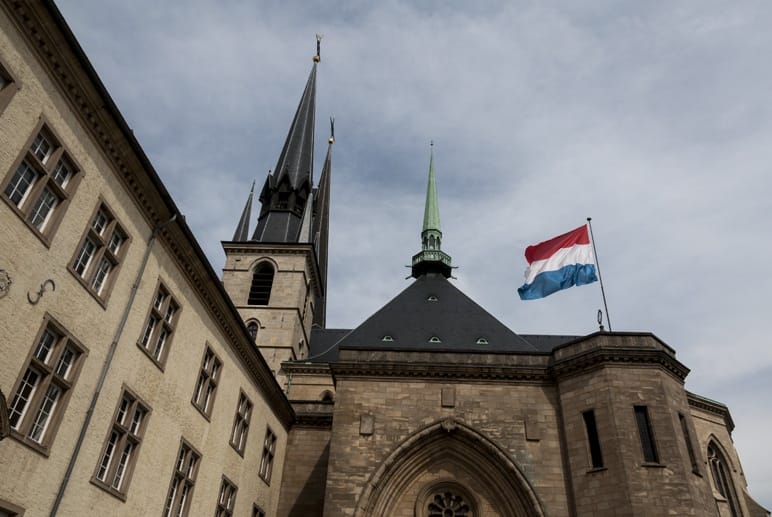
Take some time to look at the airy nave, beautiful stained glass and interior decorations including a miniature Madonna and Child altarpiece, before heading down into the crypt, where members of the Luxembourg Grand-Ducal Family were laid to rest.
7) Museum of Modern Art (MUDAM)
There are lots of museums in Luxembourg City, including the National Museum of History and Art, with an eclectic collection of paintings, archaeological exhibits and more – if you have time, do check it out since it’s right in the centre!
However, our favourite museum in Luxembourg City is definitely the Museum of Modern Art (MUDAM), set in a panoramic location on the walls of a former Fort overlooking the Old City.
The museum was designed by Ieoh Ming Pei, famous for the Louvre pyramid, and its interiors were completely decorated by modern artists. Exhibition change regularly and often include immersive, large scale installations. If you like art, add it to your list of places to visit in Luxembourg City!
8) Lunch at Chocolate House
There’s much to see in Luxembourg City, you’re bound to get hungry! A popular lunch stop is the Chocolate House, right across the road from the Grand Ducal Palace. Naturally, they have lots of chocolate cakes, cookies, chocolate bars and the like – don’t miss the Hotchocspoon, a lump of chocolate on a spoon that can be stirred into hot milk, available in over 20 flavours.
If you’re after something savoury, the Chocolate House offers a lunch menu that includes salads and quiches, and portions are HUGE – just another reason to love this place! If this isn’t a not-to-be-missed Luxembourg attraction, I don’t know what is!
9) Sample Traditional Luxembourgish Food
Did you know that Luxembourgish food was a thing? It’s best described as a blend of German and French cuisine – locals joke saying that food in Luxembourg is ‘French quality with German portions’, referring to the large servings.
There are many several restaurants in Luxembourg City offering traditional dishes like kniddelen, dumplings served with butter, speck and cream, and wainzoossiss, small wine-flavoured sausages with a mustard sauce and mashed potatoes.
Brasserie du Cercle in the Old Town is a great place to try some Luxembourgish food, maybe with a glass of local wine from the Moselle valley, alternatively you can head to Brasserie Mousel’s Cantine and Chiggeri which came highly recommended!
Where to stay in Luxembourg City
- Park Inn by Radisson Luxembourg City
- Sofitel Luxembourg Le Grand Ducal
- The White Design Apartments
- Hotel Parc Beaux Arts
Things to See in the Ardennes
10) Vianden Castle
If you have time to see only one place outside Luxembourg City, we recommend heading to Vianden, a town in the northern Ardennes region famous for its spectacular castle.
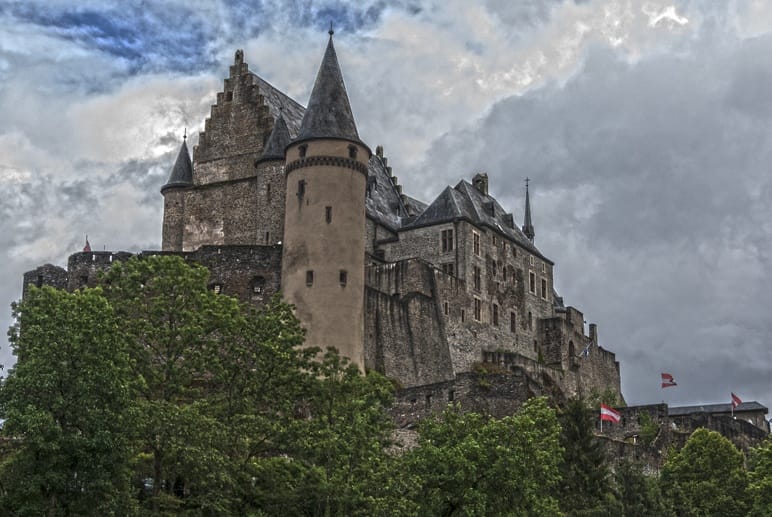
Vianden Castle was built between the 11th and 14th century on a Roman ruin, and its heyday lasted until the 15th century. Nowadays, the castle is a stunning sight, overlooking the city from a hilltop with its turrets and battlements, and one of the best-preserved examples of Medieval architecture in the country.
You can visit the castle year round, but if you really want to travel back in time, try to be there in occasion of the Medieval Festival, when the castle is buzzing with knights, jesters and fair maidens. It’s definitely a worthwhile Luxembourg point of interest, away from the Capital!
Getting There from Luxembourg City: Train to Ettelbruck then bus 570
Where to Stay in Vianden: B&B Auberge du Chateau
11) Learn about the Battle of the Bulge
History lovers will know that Luxembourg was where the Battle of the Bulge took place, the post D-Day German counteroffensive that killed thousands in December 1944. The Battle of the Bulge is also known as Battle of the Ardennes, as it mainly happened in the northern region and across the border in Belgium.

Nowadays, there are two museums in the Ardennes that can be visited to learn more about the Battle of the Bulge – the Battle of the Bulge Museum inside Wiltz Castle, and the National Museum of Military History in Diekirch. If you’re into war and history, these museums deserve to be in your list of places to visit in Luxembourg!
Getting There from Luxembourg City: by train to both Wiltz and Diekirch.
Where to Stay in Wiltz: Aux Anciennes Tanneries
Where to Stay in Diekirch: Hotel Restaurant Beau Séjour
Nature in Mullerthal
12) Hike the Mullerthal Trail
Nature lovers, take note of this Luxembourg attraction! Did you know that Luxembourg has its very own set of long-distance trails? The Mullerthal Trail includes three loops and four extra ‘add-ons’, covering the best of the stunning Mullerthal region near the German border.

Mullerthal is also known as Luxembourg’s Little Switzerland because of its rocky formations, forests, and caves, and it’s an area of incredible natural beauty – besides hiking, it’s also possible to go climbing, kayaking or mountain biking in the vicinity of the Mullerthal Trail.
For more info, check out our Mullerthal post!
Getting There from Luxembourg City: Bus 110 to Echternach
13) Schiessentümpel Waterfall
This waterfall is located along the Mullerthal Trail and it is one of the most Insta-perfect places in Luxembourg – don’t miss it if you love fantasy, nature and Lord of the Rings-like atmospheres!

Schiessentümpel is a waterfall surrounded by a mystical forest, with a stone bridge in the background. The waterfall runs over a boulder, eroded over time, splitting the water stream into three.
If you’re lucky to visit when the sun is not shining too bright, and there are not many visitors in sight, it’s a great place for a photo opportunity. Just keep a lookout for Hobbits!
Getting There from Luxembourg City: Bus 111 to Consdorf, then bus 470
14) Explore Hohllay Cave
Hohllay Cave is another cool Luxembourg sight in Little Switzerland, a cave with low vaulted ceilings that was hollowed out from the rock over the centuries – in fact, the name ‘hohllay’ actually means ‘hollow stone’.
Mining in Hohllay started in Roman times, but it was at its most intense during the Middle Ages, when the rock was cut to make millstones, leaving pillars for support. The cave is not far from Berdorf, along the Mullerthal Trail – don’t miss it!
Getting There from Luxembourg City: Bus 111
15) Echternach
Echternach is the largest city in the Mullerthal region, and a great place to use as a base if you’re planning to hike sections of the Mullerthal Trail.

It’s worth spending a few hours walking around Echternach, checking out its pedestrian historic centre and market square, and visiting the famous Echternach Basilica, first founded in the 7th century but rebuilt several times throughout history.
Inside the Basilica there’s a small info centre where you can learn more about Echternach’s famous Dancing Procession, a unique UNESCO-listed tradition taking place every year on Whit Tuesday.
We also recommend riding a bike all the way to Echternach Lake – there’s a Roman villa, an adventure park on an island and lots of playgrounds for families to enjoy. The Roman villa is one of the best Luxembourg archaeological sites, so take note if you like history!
Getting There from Luxembourg City: Bus 110
Where to Stay in Echternach: Eden au Lac
16) Go Camping in Mullerthal or the Ardennes
When we visited the Mullerthal region during our second Luxembourg trip, we were surprised to find out that camping is very popular in the country!
We saw lots of motorhome campsites all over the river Sûre, but if you prefer a more ‘traditional’ campsite for tents we recommend Martbusch in Berdorf, which also offers accommodation in wooden pods.
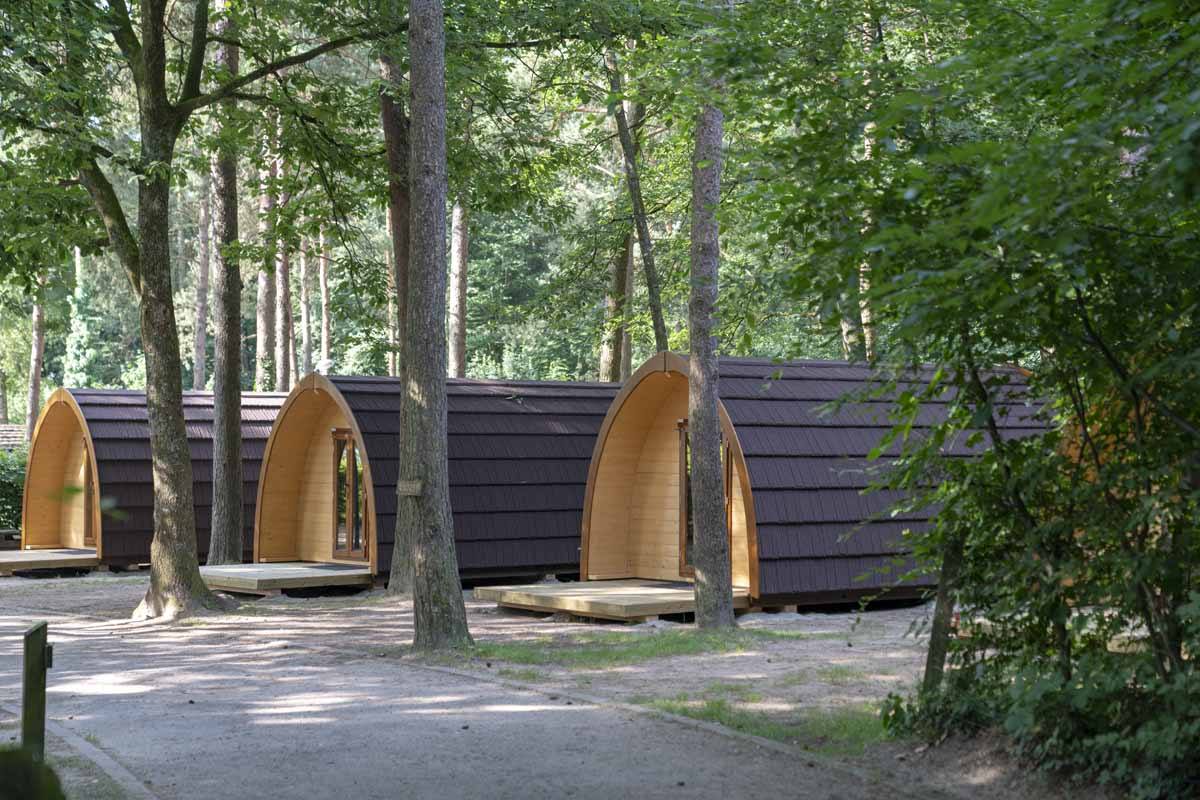
Another option for Luxembourg camping and glamping lovers is Kautenbach in the Ardennes, also offering wooden pods and safari tents!
Mining History in Southern Luxembourg
17) Explore Luxembourg’s Industrial Past
The southern part of Luxembourg is perhaps less attractive in terms of nature than the Ardennes and Mullerthal, but it’s also worth a visit to learn more about the country’s industrial past – the area was a busy iron ore mining centre, instrumental in the development of railways.
A great place to start is Minett, a park on a former industrial site, which can be accessed by steam train travelling the railway line used to ship iron ore to other parts of Luxembourg and beyond.
Visitors can walk around Fond-de-Gras, the centre of mining life, and visit offices and warehouses, then take the mining train through old tunnels to reach the village of Lasauvage, where miners used to live.
There’s also the National Mining Museum in Rumelange, also including a tour on foot and by train through old mining tunnels. Take note of these places to see in the southern part of Luxembourg if you’re after something different!
Getting There from Luxembourg City: by train to Petange and Rumelange.
Relaxing and Wine in the Moselle
18) Biodiversum and Haff Reimech Nature Reserve
The Haff Reimech Nature Reserve is located in the southern part of the Moselle, in a wetland area popular for birdwatching.
You can combine a tour of the reserve with a visit of the Biodiversum, a futuristic building on an artificial island, with an exhibition on Luxembourg nature and biodiversity. Not far from the nature reserve there’s Schengen, the village where the famous agreement was signed – another one of Luxembourg sites worth visiting!
Getting There from Luxembourg City: Bus 175 to Mondorf, then bus 185
19) Wine Tasting in the Moselle
Schengen is in the heart of the Moselle, Luxembourg’s wine region, especially famous for its cremant (sparkling) wines.
You’ll find Moselle wines on every restaurant menu around the country, but nothing beats wine tasting straight from the cellar door – and in the Moselle, it’s easy to do so, with over 50 producers located within a 39 km radius.
You can start with the Wine Museum in Ehnen, then rent a bike and spend the rest of the day visiting wineries. The Moselle is only 20 km from Luxembourg City, making for the perfect day trip from the capital!
Getting There from Luxembourg City: Bus 175 to Mondorf, then bus 185.
Where to Stay in the Moselle: Hotel de l’Ecluse Superior
20) Relax at Mondorf-les-Bains
In the southernmost part of the Moselle you’ll find Mondorf-les-Bains, a town famous for its thermal complex – 50 hectares with manicured lawns, indoor and outdoor thermal pools, a sauna and sport pavillion, and the opportunity to enjoy health and wellness treatments.
You can stay at the Mondorf Parc Hôtel for a full-on wellness experience, or just enter the spa for €23.
Luxembourg in Winter
21) Luxembourg City Christmas Markets
What kind of Christmas would it be without some Christmas Markets? Similarly to Germany, Austria and pretty much all of Central Europe, Christmas Markets in Luxembourg City are an integral part of the festive landscape.
Starting from the last weekend of November, all the way to the end of Christmas holidays in early January, the main squares of Luxembourg City are filled with wooden huts selling traditional crafts or serving up traditional festive food and drinks like glühwein (mulled wine), currywurst, tartiflette (potatoes, bacon and cheese) and naturally lots of chocolate sweets!
In some of the larger Christmas Markets you’ll also find Carnival-style rides and attractions, whereas the smaller ones usually just have some Christmas music playing and maybe a giant Weihnachtspyramide (Christmas Pyramid),
You’ll find Christmas Markets in various locations around Luxembourg City – the best known are in Place de la Constitution, Place Guillaume II, and Place d’Armes. There is also a smaller Christmas Market in the Grund, which is especially interesting for foodies!
22) Knuedler on Ice
Ice skating on the Place Guillaume II, affectionately referred to by locals as ‘Knuedler’, is another iconic thing to do in Luxembourg in winter.
The skating rink is erected at the centre of the Christmas Market located in the square, and opening dates and times are the same as the market – from the last weekend in November to the first weekend in January.
Knuedler on Ice is open from 11 AM to 9 PM Sun-Thurs, and 11 AM to 10 PM on Fri and Sat. There are also special opening times on Christmas Eve (11 AM to 5 PM) and New Year’s Eve – 11 AM to 2 AM, with a New Year’s party taking place from 10 PM onwards.
Entrance costs only €5, with another €2 for skate rental – naturally, you can also enter with your own skates. If possible, try to visit in the evening – the place is just magical with the lights of the Christmas Market all around!
23) Liichtmëssdag (Candlemas Day)
Licht-what? This celebration taking place on February 2nd is truly Luxembourgish, and if you happen to be in the country around that time it’s truly worth experiencing.
In the afternoon, groups of children wander together from house to house in their neighbourhood, carrying a Liichtebengelcher – originally a candle on a stick, now a colourful electric lantern.
As they make their way across the neighbourhood, the children sing a traditional song known as Léiwer Härgottsblieschen, translating as ‘peas and bacon’, and locals give them sweets and coins in exchange. If you do come across a children’s procession on the day, make sure you have something for them!
Pin it for later?
